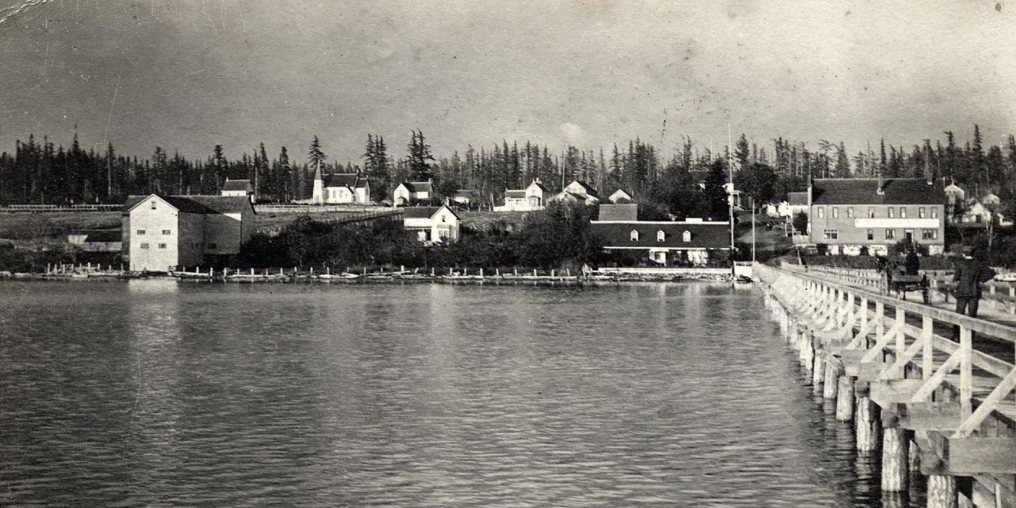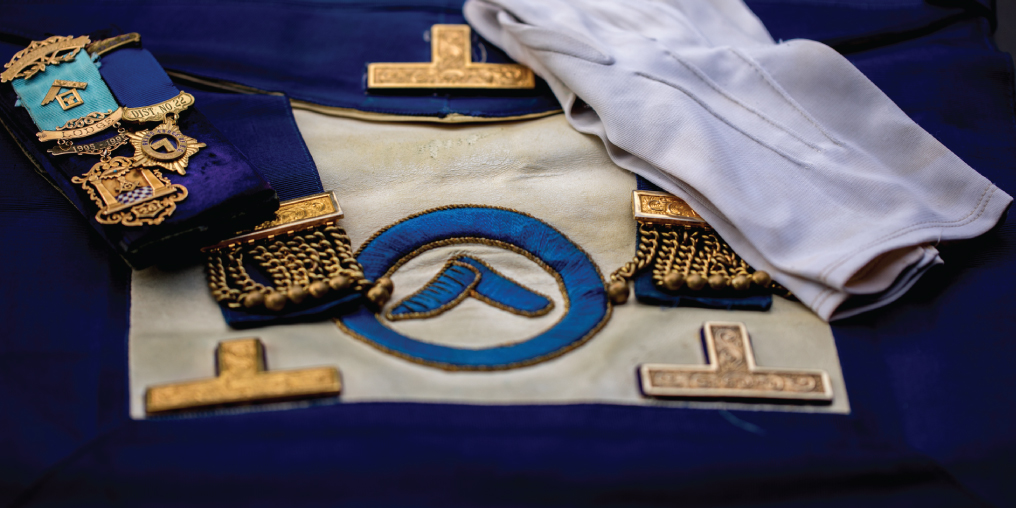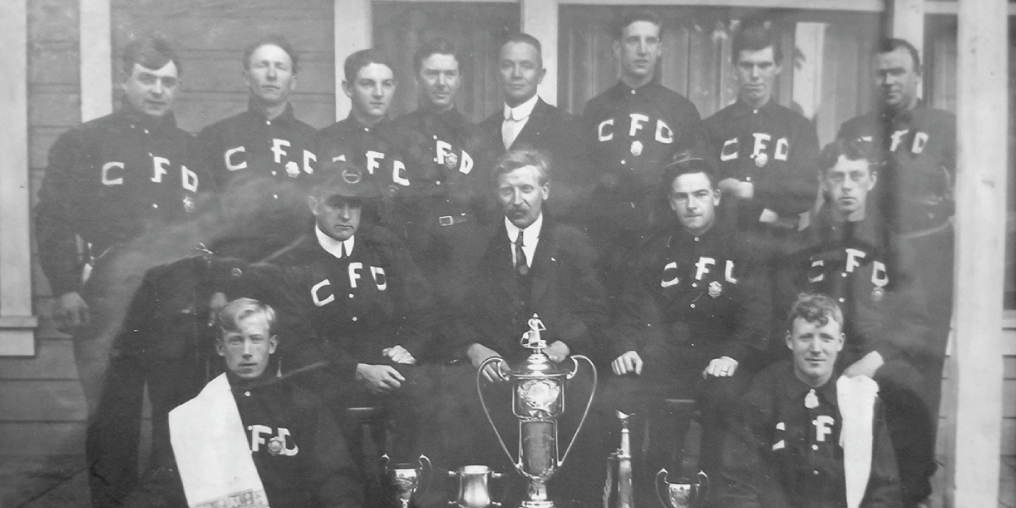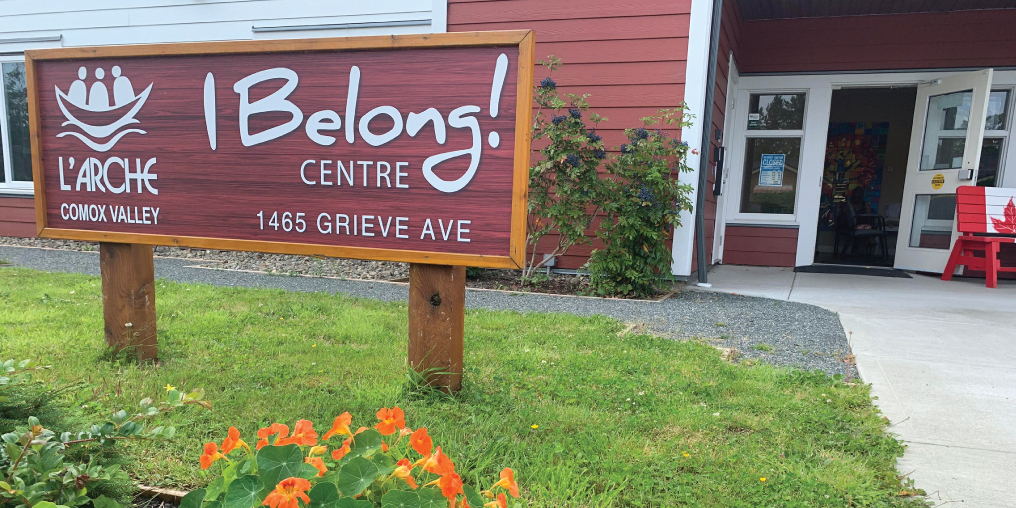The Purple Martins swirl and swoop in the air above my head, their bright chirping punctuating the sound of the wind and the waves. They circle, collecting insects in midair, bringing them back to their awaiting young. These birds have returned to the Comox Marina after a long departure, their population increasing exponentially with the installation of nesting boxes and scientific study. As I follow their paths across the sky, I conjure images of other travelers who have landed in this jewel of a bay to start a new life. The boardwalk where I stand replaced the long jetty that stuck out into the bay, where the steamships docked, bringing traders and explorers and ladies with long skirts. The Robb, d’Esterre, Rodello, and Filberg families quickly discovered what the First Nations had known for centuries—K’omoks, the Land of Plenty. In the tidal silt of the estuary, there are pilings of ancient First Nations fishing systems, an elaborate series of structures that supported netting to collect the bounty of the ocean and one that allowed the people of the K’omoks, Puntledge, and Tisitl’a nations to thrive.
Before roads were built to the Comox Valley, newcomers arrived by water. When “The Grappler” came into the bay in 1862, cattle were pushed overboard to make their swim to shore. The need for a wharf was clear; in 1874 one was built, jutting out more than 1000ft into the bay. Newcomers built stores, mines, farms, and hotels. The Elk and the Lorne hotels were the social centres for the town’s new families.
Today, new rooflines have replaced these old institutions at water’s edge. The Town of Comox’s Strategic Plan set out to encourage pedestrian visitors and provide a meeting place for all ages. Offering a sail-inspired silhouette against the sky, the new Spinnaker and Genoa buildings are at the hub of this plaza. A new playground is a welcome upgrade for the Valley’s growing population. On pleasant evenings, pick-up games of Ultimate Frisbee provide endless entertainment for children of all ages. The ladies’ long skirts of yesteryear have been replaced by summer dresses and shorts, and diners are tempted by the tantalizing smell of fish and chips that waft on the wind.
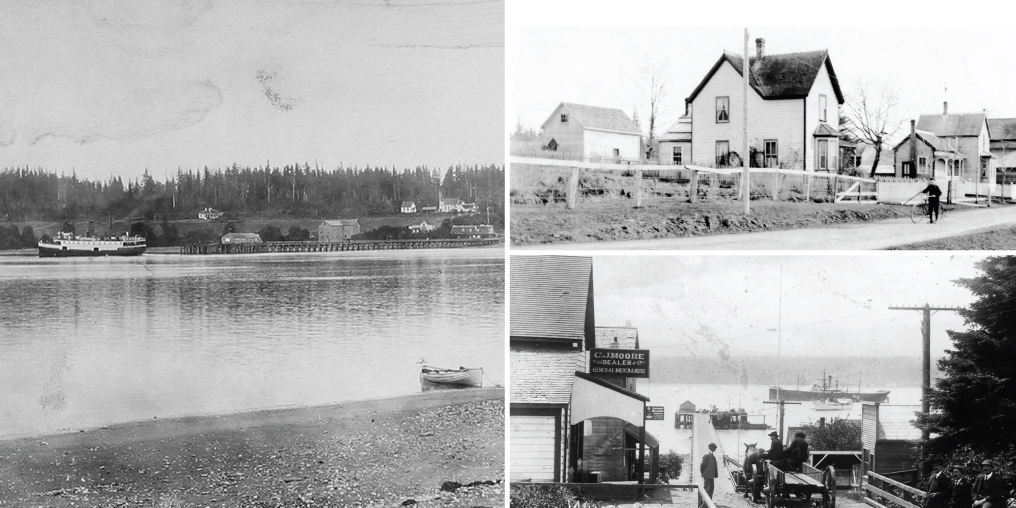
LEFT: CDM #P80-202, VIEW OF COMOX TAKEN FROM THE SPIT, 1905; TOP-RIGHT: CDM #P80-198, COMOX AVENUE, 1900; BOTTOM-RIGHT: CDM #P80-209, COMOX WHARF & C. J. MOORE STORE, 1905
I gaze off to the west where the sleeping giant of Queneesh, the glacier, keeps a constant vigil over the Valley, the same one I chose to raise my young family in. The endless possibilities for recreation are at times daunting, yet it’s the marina and the ocean whose calls are the loudest. It’s here that the magnificent light, swirling wind, changing tides, delighted visitors, and “old salts” never fail to provide a mosaic of entertainment.
The Purple Martins flutter overhead, calling for my attention. They’ll be here for a while longer before their heroic migration to southern Brazil. Unlike them, I’ll be here for the winter, drawn to the marina to watch as winter storms whip up the waves in the bay, make the flags snap, and the halyards of the moored sailboats chime against their masts. I’ll watch as the sun sets over the mountains and look forward to the return of the Martins.
FEATURED PHOTO: CDM #989.69.3, TOWN SITE FROM WHARF, 1905

